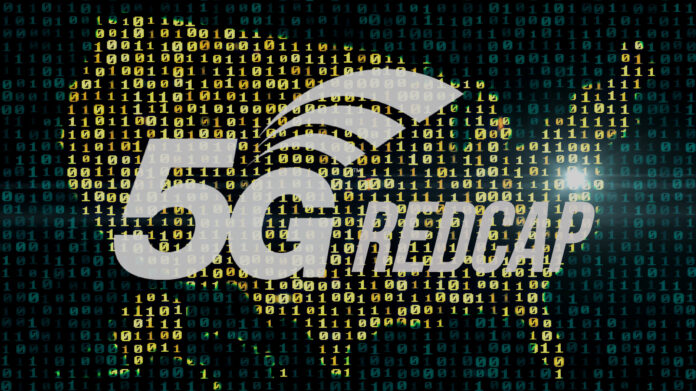AT&T has launched nationwide 5G RedCap coverage across the US, targeting mid-tier IoT use cases with lower-cost, lower-power 5G connectivity, and replacing its decommissioned NB-IoT network.
In sum – what to know:
Coverage – RedCap covers 200M+ POPs and supports wearables, AR/VR, and IoT sensors.
Devices – AT&T leads US RedCap efforts, certifying modules and launching devices.
Forecast – Nearly 1B RedCap/eRedCap connections are expected by 2030, says Omdia.
AT&T claims it has achieved nationwide coverage with reduced capability 5G (5G RedCap) in the US. It said its RedCap setup is “now serving over 200 million points of presence (POPs) across the country”. It is working with module makers Semtech, Telit Cinterion, and Rhino Mobility, among others, to certify new RedCap modules – to go in 5G-based devices with “less battery consumption, lower costs, and lower bandwidth requirements”.
AT&T’s move to switch on RedCap across the US follows its announcement in late 2024 to stop selling NB-IoT data plans and certifying NB-IoT devices, and to to decommission its NB-IoT network in the US entirely. The NB-IoT switch-off was scheduled to be completed during the first quarter of 2025, and 4G-based LTE-M and, now, 5G-based RedCap have been presented to customers as alternative (and better) technologies.
Along with Vodafone in the UK, AT&T is the leading supplier of cellular IoT to the automotive sector – which relies on higher capacity machine connectivity than NB-IoT has typically allowed. In 2022, it was the first US provider to hit 100 million IoT connections. It now has around 140 million IoT connections on its network. It has just certified a mobile hotspot, the Franklin Wireless RG350, as the first commercially approved RedCap product on its network.
As context, Release 17 of the 5G NR standard included provision for IoT sensors to connect to 5G with significantly reduced network – and therefore hardware, and therefore cost-linked – capabilities. This RedCap specification, previously ‘NR-Light’, sits provisionally between low-power IoT (mMTC) and standard-performance broadband (eMBB) in the 5G NR power hierarchy – and two rungs below elite-level critical comms (URLLC) performance.
Release 18 introduces enhanced RedCap (eRedCap) to offer further reduced capabilities and lower data rate requirements, which puts it in range of low-power wide-area (LPWA) IoT applications, as captured in LTE by the mMTC-style pairing of NB-IoT and LTE-M. Omdia predicts RedCap will follow the path of RedCap – but “with a slight delay of a year or two, helping bridge the gap as industries transition from 4G to 5G technologies”, it says.
As of November 2024, 31 operators across 22 markets have announced plans to deploy or are already testing 5G RedCap technology, according to GSMA Intelligence. These include Verizon and T-Mobile in the US. The IoT market will drive demand for RedCap, and even-more for eRedCap – to the tune of almost a billion connections by 2030, says Omdia. The total will surge at a compound annual rate (CAGR) of 66 percent in the period, to reach 963.5 million by 2030.
Omdia has been bullish on RedCap for years, going so far as to call it the ”big missing piece of the 5G IoT puzzle”. By contrast with its billion forecast, ABI Research said predicted late last year that total shipments of RedCap-based IoT modules (report here), which it positions to offer 5G-based alternatives to mid-range 4G-level LTE Cat-4 and LTE Cat-6 units, will top 80 million over the next five years, in the period to 2029. The ABI figure is for total annual shipments.
ABI Research reckons eRedCap IoT modules will account for 70-odd percent of total RedCap shipments in the period. For its part, AT&T completed the first RedCap data call in the US in the lab and in the field back in 2023. It said at the time: “LTE-M will continue to support LPWA use cases, while 5G will support the high complexity use cases. Between these is 5G RedCap, which will support mid-tier IoT use cases… that do not need standard 5G.”
Essentially, RedCap is geared as a higher-end IoT connectivity technology compared with NB-IoT and LTE-M, and as a lower-end broadband technology compared to standard 5G, as offered to consumers. It is being pitched for wearables and augmented- and virtual-reality (AR and VR) glasses, plus for a range of IoT sensors and trackers (and “mid-speed computing devices”) in the healthcare, logistics, manufacturing, energy, and automotive sectors.
The forthcoming eRedCap standard drops-down lowers connectivity performance and hardware costs, and opens up 5G to more traditional low-power IoT cases, closer to LTE-M levels. AT&T talked in a blog post about expanding its RedCap network and ecosystem. It said: “Customers can anticipate a growing portfolio of devices. This momentum will drive IoT innovation, transforming how businesses and consumers connect, operate, and innovate.”
Jason Sikes, vice president of device technology at AT&T, commented: “RedCap devices support a streamlined subset of 5G capabilities tailored for IoT and wearables. They offer reduced manufacturing costs and more compact form factors by featuring fewer antennas, lower processing power, less battery consumption, and simplified radio frequency components compared to full 5G devices.”

